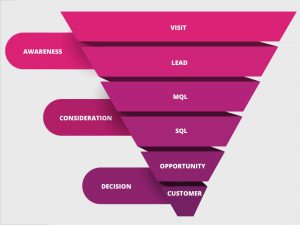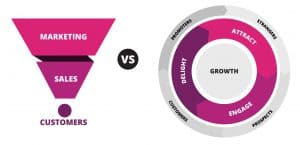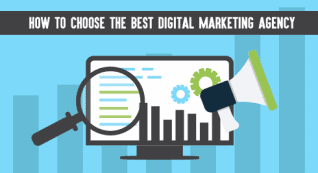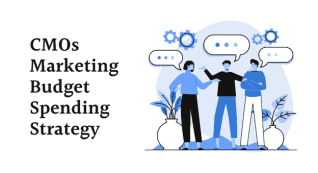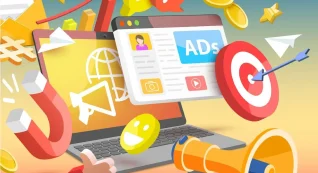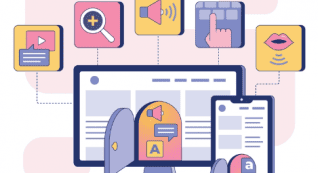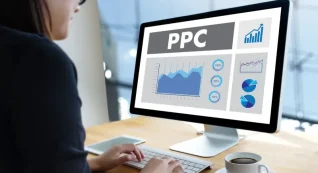Interested in retaining customers for the long term? Then it is crucial for you to invest in a customer acquisition strategy so that you can attract the right leads.
Today you will learn the following:
- Customer acquisition basics
- Lowering the cost of acquiring new customers
- Leveraging loyal consumers
We are sure that by the end of this guide, you will understand how to build an agile acquisition strategy that will withstand the ever-changing trends.
If you are already familiar with the first few steps, use the chapter links below to jump ahead to the info you want to know.
Table of Contents
SO WHAT IS CUSTOMER ACQUISITION?
Customer acquisition essentially is the process of getting customers to purchase your products.
Elements of a strong customer acquisition strategy:
- Attract leads
- Nurtures leads until they become sales-ready
- Converts leads into customers
Note: the total cost of each step is referred to as your customer acquisition cost (CAC).
Why exactly is customer acquisition important?
Loads of reasons, one being money making, because every business needs to meet costs, pay employees, and reinvest in growth. It is also beneficial to show a track record of traction for investors, partners, and influencers. Systematically attracting and convertinig new customers keeps companies profitable and growing.
What is the primary motivation of customer acquisition?
The purpose of customer acquisition is to find repeatable, methodical ways of attracting customers to your business. The tactic of “waiting for customers to organically come to you” will in no way guarantee an increase in profits over time.
Customer acquisition specialists utilize specific techniques to encourage consumers to make purchases. The goal of this process is to create a systematic, sustainable strategy to acquire new customers and grow business revenue.
In many ways, this process feels like marketing — you’re seeking ways to showcase the brand and connect with customers, but let’s clarify the differences.
CUSTOMER ACQUISITION VS MARKETING
Marketing focuses on awareness, while customer acquisition drives action. For instance, let’s say you run a Facebook ad aimed at your target market. Metrics will help determine if your effort is working — you can track how many people have shared your ad, commented on it, etc. Acquisition, on the
other hand, is more involved with the post click-through possess or after the ‘received emails’ phase.
Thus meaning, the human is willing to purchase your products or services.
The main point is that marketing drives recognition — acquisition drives revenue. But what is the difference between lead gen and customer acquisition?
Time for the break down:
THE CUSTOMER ACQUISITION FUNNEL
Typically in business, we visualise the customer journey as a funnel that highlights the stages in the buying process, each phase reflecting the mindset of the prospect. As customers move down the funnel to become buyers, they: gain awareness about your brand, add your product or service to their list, and decide to become a paying customer.
To simplify, lead generation typically happens at the top of the funnel, lead acquisition happens in the middle, and lead conversion happens at the bottom. Customer acquisition refers to the funnel as a whole.
- Another way to understand the process is through the “attract,” “convert,” and “close” phases, where strangers become visitors, leads, and customers.
Customer acquisition can also refer to the top and middle of the marketing funnel, with lead generation and acquisition combined. In this case, the bottom of the funnel (conversion) usually requires more dedicated, customised strategies to convert customers, like lead scoring and closing tactics. For our intentions, customer acquisition refers to the entirety of the funnel.
ACQUISITION MARKETING
When we create an ad strategy that targets customers who already are intrigued by your product, we call it “acquisition marketing.” These buyers are aware of your brand, which makes them optimal candidates for conversion. Acquisition is different from general marketing because it focuses on those already considering the purchase.
Digital Acquisition Marketing
When companies use online channels like organic search, social media or display ads, they are utilising digital acquisition. A strong strategy of this sort requires alignment between marketing and customer service teams. Your marketing team is responsible for developing and releasing new promotional materials that spark interest. But it’s your customer service team that is directly linked to your customers — and your current customers usually are your best marketers.
When a visitor paruses your site, they will check out the info your marketers wrote and maybe choose to buy what you offer. If they prefer a more hands on approach, they will chat with one of your service members through the live chat feature you provide. They may also decide to reach out via social media, where they will speak with whoever is in charge of representing you on those platforms.
Your customer service team is just as responsible, if not more than marketing, to bring on and keep new customers. That’s why acquisition marketing includes more hands than just your marketing team. Before we address retention through the customer service team, let’s chat about customer acquisition channels that the marketing team can use to capture potential customers’ interest and, most importantly, convert them.
ACQUISITION CHANNELS
Customer acquisition channels are the specific platforms that companies use to promote products and services to new audiences. This includes organic search, organic social media, and email. The best acquisition channels for your business will likely depend on your audience, resources, and overall strategy.
Customer acquisition methods are broken up into a variety of different types: paid and free, inbound and outbound, etc. Below, we review common methods of acquiring new customers.
1. Organic Search
Organic search refers to the search engine results pages (SERPs), such as Google’s or Bing’s search results. Organic search marketing, by extension, refers to any efforts you make to rank highly in these results.
To leverage organic search as a customer acquisition channel, you must invest in search engine optimization (SEO). Like social media, SEO complements content marketing efforts by optimising content so that it’s more easily found by your target buyer.
So when you Google something, you typically click on one of the first results, right? The idea is to create content that shows up high on the SERPs and makes searchers want to click on your content.
Thankfully, you don’t have to guess how to use organic search, you can just use tools like SEMRush, Open Site Explorer, and Ahrefs to find the best keywords for your business and create powerful content that attracts potential new customers.
2. Paid Search
Paid search marketing (pay-per-click, or PPC) is advertising on search engines. Some PPC platforms, such as Google Ads, allow you to place display ads on partner websites and publishers.
PPC allows you to create a search result and pay for it to show up alongside organic results, increasing your chances of being found.
For best performing content in search engines, you can use tools such as Google Keyword Planner and Microsoft Advertising.
3. Organic Social Media
Social media marketing consists of two methods: organic and paid. Organic media is useful for boosting awareness for your brand, developing a company personality, and sharing content you’ve published in your blog or videos.
Organic social media also inspires customers and followers to help you advertise.
4. Paid Social Media
Leveraging paid social media may be the best tactic, depending on your budget and audience type. Paying for social media advertisements and exposure is an effective way to get content in front of your audience, without having to build up a network of loyal followers, which is vital as well.
Facebook Lead Ads allow you to advertise on social and gather customer information like emails and names. This can make the difference between a follower and a lead, so if your business is looking to build its list, this is likely the acquisition method for you.
5. Email
With all that gathered info, marketers build email lists and leverage such lists to connect with and convert customers. Email marketing can seem like an outdated acquisition method, but it’s highly effective for promoting quality content, product information, discounts and events. It can also be a great way to maintain relationships by sharing a simple happy birthday email.
Email marketing provides a direct line into your consumer’s inbox. Outside of direct sales, there’s no better acquisition tactic to reach the heart of the individual customer.
6. Referrals
Customer referrals is an extremely powerful tool to acquire new customers. While you can’t force current clients to refer others, you can encourage this behaviour. Creating a referral program is a surefire way to bring in new business through your customers.
You can offer incentives — credit, physical gifts, or monetary rewards — to motivate a customer to share about your company. Just keep in mind, if you consider a referral to be valuable, you must provide something equally valuable in return.
While a structured, incentive-based program typically works best for B2C companies, B2B companies tend to have better luck asking for direct referrals from their clients. Whichever strategy you choose, be sure to provide value. Offer customers a reason to refer you — you want them so delighted by your business, that they can’t help but share!
7. Events
Events are a fantastic way to connect with interested prospects and acquire new customers. An event could be a conference, webinar, or a trade show, it’s safe to say you’ve got options.
Today, the majority of events are held online, making customer acquisition simpler, as attendees need to register with email addresses in order to attend. If this customer acquisition channel is new to you, consider holding a small webinar or virtual summit, or renting a booth at a larger event.
8. Traditional Advertising
Traditional advertising channels — AKA TV, radio, and print media — are a great fit for local businesses, as well as large businesses that have the budget for launching multi-city campaigns. Traditional advertising is a powerful acquisition method if you properly target your ads, just make sure to carefully consider the audiences that each publisher caters to.
You can attain audience details from the publisher’s media buying guide. There, they’ll also describe the accepted dimensions, as well as any other requirements for publishing or running your advertisement.
Now that we’ve bulldozed through channels you can use for your customer acquisition plan, let’s cover specific strategies that fall under each channel’s umbrella.
CUSTOMER ACQUISITION STRATEGIES
SEO • Content Marketing • Blogging • Social Media Marketing • Video Marketing
Email Retargeting • Sponsored Content • Customer Spotlights • Gated Content • Product Pricing
1. SEO
Customer Acquisition Channel: Organic Search
Create indexable content — content that search engines can read, decipher, and index — as a method to help your content rank better in organic searches. Options for increasing content’s “indexability” include:
- Putting your main keyword in the post title
- Adding alt text to your images
- Uploading transcripts for video and audio content
- Linking internally within your site
- Note: there’s way more that goes into SEO, but these are some basics to get you going. SEO is a top priority for marketing teams across the globe for a couple of reasons: it’s easy and cost-effective. Learn SEO strategies, stay up to date with trends, and optimise blog posts — and you’ll be well on your way to a better content ranking.
2. Content Marketing
Customer Acquisition Channel: Organic Search
An effective customer acquisition method is content marketing. Creating new, exciting, and relevant content is an efficacious way to snag your audience’s attention and lure them to your website.
False advertising and dwindling consumer trust makes content marketing all the more valuable. There’s also no wrong type of content you can create. The heart of content marketing is connecting with and converting your audience. For this reason, each piece of content should be relevant to your readers and include a clear call to action. Don’t forget that content creation and content promotion are two crucial aspects of content marketing.
3. Blogging
Customer Acquisition Channel: Organic Search
Blogging is an incredibly useful acquisition method for businesses of all sizes, industries, and audience types. Running a blog gives you the freedom to explore various topics, flex your knowledge in your industry, and build authority among readers. Blogs offer new opportunities to engage with your audience, a question they can answer in the comments, or an enticing call-to-action they can click.
If you choose to blog, be sure to have sustainable resources in place. Writers can be anyone from employees, freelancers, to guest writers. Having a graphic designer and editor on board will ensure your content is optimised for both search engines and reader experience.
4. Social Media Marketing
Customer Acquisition Channel: Organic Social Media, Paid Social Media
Develop a solid game plan for social media by asking yourself the following questions: What networks are you going to leverage and which ones will you avoid? What’s your brand voice and who will develop and manage the content? Intimidated? Don’t worry! Posting organically on social media can feel like shouting into a void.
The key is to access the right networks — and this all circles back to a well-defined audience. For example, if you’re targeting an audience mostly composed of men, Pinterest would have little value for you as only 15% of men use Pinterest. If your audience is made up of millennials, you should include Facebook, Instagram, and Snapchat in your playbook. Consider using social media management tools like HubSpot to help you curate and post content on your networks.
5. Video Marketing
Customer Acquisition Channel: Paid Search, Organic Social Media, Paid Social Media
One of the most complicated (and most effective) forms of content to produce is video. Yet with higher-quality cameras becoming cheaper and a wide array of freelancers to choose from, creating videos is getting easier.
Video production typically involves script writing, editing, production, and animation — all of which you can outsource through freelancers or production agencies. Video tends to be on the expensive side as far as content types go, so be sure to preserve your best ideas for this medium.
Good news: this content type is highly versatile, meaning you can promote through search display ads, organic social media posts, and paid social media posts. You can also add your videos to your blog posts to better engage readers, enhancing your chances of conversion. Don’t have the budget for video marketing? Slideshare is a great alternative to video.
6. Email Retargeting
Customer Acquisition Channel: Email
Keep an eye on list behaviour and retarget your emails accordingly. An example would be when you get a new subscriber, it’s safe to assume that the consumer is interested and wants to learn more. If they don’t respond to the first few emails you send, however, you’ll want to adjust your strategy and A/B test different calls-to-action.
Link clicks in your email will inform you as to what your subscribers are most interested in. Furthermore, people that unsubscribe altogether can give you insight into how your subscribers view your emails and the content you share.
7. Sponsored Content
Customer Acquisition Channel: Paid Search, Paid Social Media, Traditional Advertising
Sponsored advertisements can be created for anything from paid ads on the SERPs to influencer posts on social media. Regardless of the channel you pick, sponsored ads help you generate awareness around your products and services to attract new audiences. You can play with different types of sponsored content, such as sponsored search results, sponsored product mentions, and paid blog posts on related publications.
8. Customer Spotlights
Customer Acquisition Channel: Customer Referrals
A super powerful customer acquisition tactic? Turn your satisfied customers into promoters. Empower your customers to promote your business and help you save time and money on other acquisition methods by…
- Requesting customer stories. Whether through case studies, interviews, reviews, or user-generated content, ask your customers to tell their own stories of how they came to discover your business and why they love it. Instead of boasting about your own company via paid advertising or social media, pass the microphone and let your customers do it for you.
- Make content easy to share. Customers equipped to directly share content you’ve created, like social posts, blog posts, or graphics will be your best marketers. The viral loop: customers share content that leads their followers back to your business. Create content like “Click to Tweet” links so that your customers can easily share social posts and make sure each piece of published content has options to share via email or social media. The more convenient promotion is for your customers, the more likely they’ll engage.
9. Gated Content
Customer Acquisition Channel: All
Gated content is content that readers must exchange personal information, like emails and names, for access. Possible content types include ebooks, guides, templates, white papers, and more. Shareable through any medium, gated content can be paired with virtually any customer acquisition channel, like a landing page or a social ad.
This content category is an important customer acquisition strategy that straddles the line between SEO, content marketing, and conversion rate optimization. Note that it’s essential to ensure that the content is truly gated — that is, that the guide or ebook isn’t actually indexed and findable online. Otherwise, potential customers will simply search for it without giving you their email.
10. Product Pricing
Customer Acquisition Channel: All
Your product’s pricing strategy is another powerful customer acquisition tool that can be promoted across every channel, down from TV ads to customer referrals. Alternatively, you can let your product pricing attract customers on its own, especially if your competitors’ prices are much higher.
For instance, selling freemium software can help you naturally acquire customers whom you can upsell later. “Free tools” will pull in just about anyone who’s working with a budget or who wants to get a taste of your product before investing in a subscription. If you sell consumer products, “Buy One, Get One Free” will have a horde of customers clicking “Add to cart,” expanding your customer base without much work. Consider the following pricing strategies:
- Promotional Pricing
- Discount Pricing
- Freemium Pricing
These customer acquisition methods work together; social media can promote SEO-optimised content that includes a call-to-action to join an email list.
Mixing up and experimenting with a variety of customer acquisition methods can also help you learn more about your audience and introduce new tactics to your current strategy. Regardless of which you choose, always leave room for analysis, improvement, and change — you never know when customers may stop responding to your methods, or leave altogether.
HOW TO MEASURE CUSTOMER ACQUISITION
Customer acquisition cost (CAC) is the cost associated with bringing a new customer or client to your business, like marketing costs, events, and advertising. It’s typically calculated for a specific campaign or window of time.
CAC is important because it assigns real value to your marketing efforts and allows you to measure your ROI — a metric inquired about by CEOs, managers, and investors alike.
Calculating Customer Acquisition Cost
High-level customer acquisition cost is calculated by dividing marketing costs associated with a specific campaign or effort by the number of customers acquired from that campaign.
CAC FORMULA
This CAC formula is CAC = MC / CA, where: CAC is customer acquisition cost MC is marketing costs CA is customers acquired. To get a more in-depth, accurate look at CAC, you should include all costs associated with marketing spend, including everything from campaign spend to marketing salaries.
CAC FORMULA EXAMPLE
The CAC formula looks like this: CAC = (MC + W + S + OS + OH) / CA, where: CAC is customer acquisition cost, MC is marketing costs, W is wages for marketing and sales, S is marketing and sales software, OS is outsourced services, OH is overhead for marketing and sales, CA is customers acquired.
Where the simple CAC metric might apply to a single campaign, the more complex CAC formula should be calculated within a given window, such as one month or fiscal year. For example, if Company A spent $10,000 on customer acquisition in Q4 of 2021 and acquired 100 customers, the CAC would be $100.
CAC can be a fickle metric and shouldn’t be the only number used to evaluate marketing efforts. Here are a few reasons that could throw off the value and application of your CAC:
- On average, how often do your customers make purchases? There’s a major difference between the CAC of an Audi dealership and a Starbucks.
- Does/did your company spend money on marketing efforts that are slated to pay off in the far future? Say you invest in a Q3 campaign but pay for it in Q1. You aren’t necessarily going to see new customers right away from that investment, and that might skew your Q1 CAC.
Regardless, CAC is a critical number to calculate (and consistently recalculate) when acquiring new customers and employing new acquisition methods.
Minimise Customer Acquisition Cost
In marketing you can always do better. You can always reach new audiences, market with better messages, and minimise associated costs. There’s always room for improvement; you are never stuck with a subpar metric.
If you’re looking to improve your CAC, we’ll share with you the following few ways to minimise the cost of acquiring new customers.
- First improve your website conversion efforts by enhancing calls-to-action, ensuring your site is mobile and tablet responsive, optimising your landing pages, and cleaning up your copywriting. Consider A/B testing a landing page or shopping cart to see if a certain design or copywriting angle works best. These tricks will make sure any customer acquisition methods you’re already employing are top notch.
- Boost the value of your current customers. This may involve releasing a new product or upgrade in which your customers can also invest in. User value can also skyrocket when they refer other customers or simply act as promoters for your business.
- Take time to structure your acquisition blueprint and see what each method costs you. Where can you cut back on extra marketing spend or manpower? Costs for specific channels can rise over time and you can always minimise CAC by finding newer, cheaper channels to invest in. This process also ensures a strategy that reflects the most recent marketing trends and remains agile.
HOW TO IMPROVE YOUR CUSTOMER ACQUISITION STRATEGY
Every business needs new customers to grow and succeed, so whether you’re a company of five or 5,000, having a roadmap for customer acquisition is a smart move. Below are a few steps you can take to build a strong customer acquisition roadmap.
1. Make your strategy sustainable
A sustainable customer acquisition strategy is one that works in the long run. This means that the investments you make (money, time, or team) can be upheld for the foreseeable future. So if you plan to acquire new customers through blogging, you should have the tools and resources in place to ensure content production lives past one or two posts — effectively bringing in organic traffic for months or years to come. This is why inbound marketing is effective — it creates sustainable traffic and, therefore, a sustainable source of new customers. Consider this in comparison to ads, which can be an effective way to acquire customers … as long as the ads are live.
2. Build in flexibility
Your customer acquisition strategy should also be flexible because marketing and sales, and the way people respond to them are always changing. While salespeople were once the gatekeepers of information about a product, that’s no longer the case. Consumers are increasingly sceptical of brand claims and anything said about a product by the company or its reps.
In a HubSpot Research study, we found that 81% of consumers trust the advice of family and friends over businesses. Creating a customer acquisition strategy that only relies on salespeople would put your company in a tough spot. Keep your strategy pliable, and you’ll always be ready to respond to market trends.
3. Find your target market
All consumers aren’t your best consumers, and customer acquisition efforts can result in a waste of resources if they’re not targeting the right people. Before you invest in any customer acquisition methods, you must define who you’re targeting with said methods.
The process alone of defining your buyer persona can help weed out any unnecessary or wasted acquisition efforts, as well as alert you to specific needs or desires that some channels may meet. For example, businesses targeting Gen Z might consider creating videos as part of their content marketing strategy, given that 77% of teens and young adults ages 15-25 use YouTube.
A targeted customer acquisition strategy requires taking a step back and figuring out what’s best for your business, resources, and audience. Then, you can expect to see real responses to your customer acquisition efforts.
4. Diversify your approach
Ever heard of cross-pollination? It’s when bees spread pollen between a variety of plants, bringing about variations of species that better withstand time and nature. In this case, marketers can be compared to these well-travelled bees.
When you diversify your acquisition strategy and use various acquisition methods, you have a greater chance of reaching new audiences and generating new leads.
Also, diversifying your customer acquisition strategy creates a balance between risk and reward, meaning if one channel begins to fail (see: salespeople example above or the declining effectiveness of organic Facebook reach), it’s easier to reallocate funds for a new, better-performing method.
5. Track your customer lifetime value
Customer acquisition is important, but how long customers continue doing business with you is even more critical. Understanding the types of customers with the longest customer lifetime value can help you refine your customer acquisition efforts and improve your strategy overall.
Customer lifetime value is the estimated net profit that an individual or business will provide over their lifetime as a paying customer. It’s a helpful factor to consider when getting to know your customers and how they interact with your business.
It also provides a clear valuation of your marketing and support efforts and helps influence business decisions across the board. Customers with high LTV are more expensive to acquire, but they provide the greatest value — in terms of revenue, feedback, and referrals — than other customers.
Calculating customer LTV isn’t difficult, but it does require defining a few metrics along the way, such as average purchase value and frequency. Even if you have to estimate these numbers, having a solid customer LTV can help you predict how much revenue you can roughly expect a customer to provide throughout their relationship with your business.
By defining customer LTV alongside CAC, companies can figure out just how long it takes to replace each investment made in acquiring new customers — and how to better spend that acquisition budget.
6. Prioritize decreasing customer churn, not making up for it
Despite working hard and employing various methods to acquire new customers, sometimes they do leave us. That’s the unfortunate motivation behind customer acquisition, though, and it’s important to recognize. On that note, let’s discuss another buzzword: Churn.
Customer churn represents the percentage of customers that peel away from your business and opt-out of your products or services. It’s also referred to as customer attrition or turnover.
Why is churn important? Customer churn is what motivates businesses to find and acquire new customers. When you lose customers, you want to go out and find new ones, right? Historically, as businesses have experienced higher churn rates, they’ve invested in more (and more expensive) acquisition methods.
It’s time to look at customer acquisition and customer churn in a new light. Instead of using acquisition methods to make up for customer churn, it’s imperative to decrease churn altogether. That way, you can avoid the proverbial “band-aid” of customer acquisition to address the source of the wound — unhappy or unsatisfied customers.
Customer retention can become a powerful customer acquisition tool. Instead of looking outward and onward for new customers to replace the old, forgotten ones, I propose that you look inward and work to retain customers using new and improved customer service methods.
7. Switch from an acquisition funnel to an acquisition flywheel
Remember how I discussed the marketing funnel in the first section? While the funnel is a handy visualisation of how customers come to know and buy from your brand, it’s lacking in one thing: how your current (and past) customers fuel future customers. When your business focuses on delighting and retaining customers, your marketing strategy starts to resemble a flywheel, not a funnel.
The “flywheel” is a model adapted by HubSpot to explain the momentum a business gains when the entire organisation is aligned around delivering a remarkable customer experience that produces happy customers who drive referrals and repeat sales.
That’s customer retention in action: working to retain your customers (instead of paying to replace lost ones). This is an acquisition method in itself — and a much cheaper one at that.
It’s a well-known fact that retaining customers costs much less than acquiring new ones. 90% of happy consumers are more likely to purchase again, and 93% are more likely to be repeat customers at companies with excellent customer service. These are just a few reasons to establish customer retention strategies — just like customer acquisition ones.
The customer retention strategies you put into action will vary based on your business model, audience, resources, and more.
SMART CUSTOMER ACQUISITION HELPS YOU GROW BETTER
Customer acquisition is the core of any company, small or large. Meaning, you can’t afford to give up on marketing to new customers. Research shows that the key to growth lies with your customer service team and your customers themselves.
Yep, you read that right — companies that succeed put their customers in the spotlight, for both acquisition and retention. So set up your acquisition strategy with care and you can expect to lower the cost while increasing customer lifetime value.
Customer acquisition is all about gaining loyal consumers who not only stick around, but help you expand your reach. Instead of the outdated funnel approach, start seeing your acquisition and retention methods as a flywheel. Bring new customers on board and don’t forget them once they’ve joined. Equip them to succeed and they’ll go to work on your behalf.
Interested in learning more?
Please feel free to contact us!


